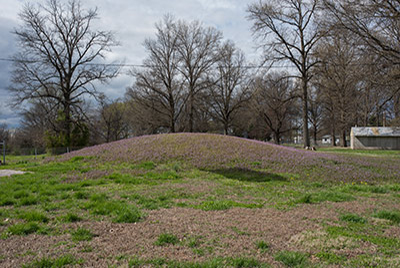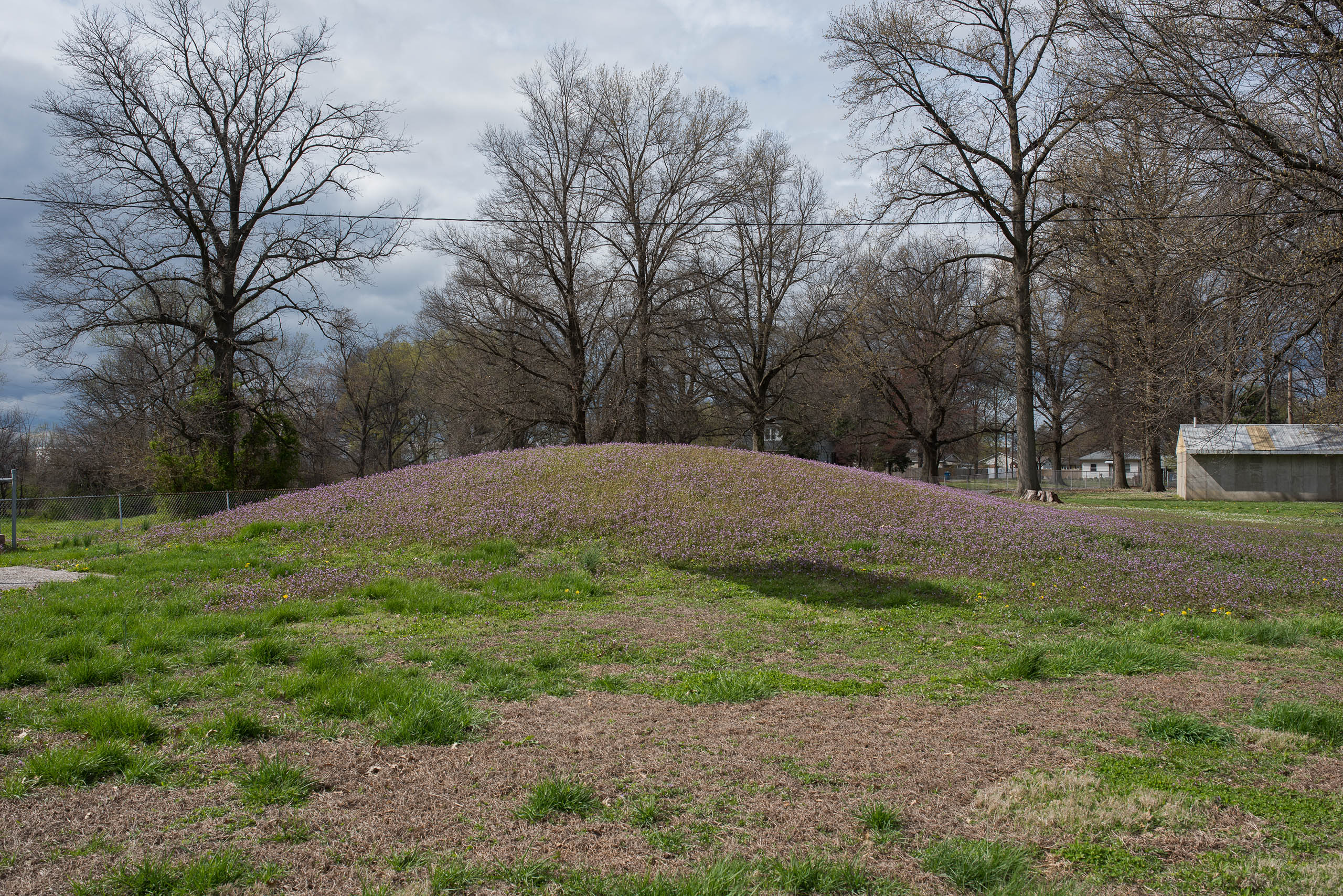



While Cahokia Mounds State Park, 12 miles to the south, receives the majority of archeological and tourist interest, the community of South Roxana has a pre-contact mound of its own. Part of what was once a larger clustering of 11 mounds known to archeologists as the Grassy Lake site, the Roxana Mound is one of the few remaining mounds after large-scale agriculture and the development of the Shell Oil Refinery leveled the area for industrial purposes. William Clark—of Lewis and Clark fame—was one of the first to record the presence of these mounds as he explored the area while waiting out the winter of 1803–4 at Camp DuBois, not far from the site. In 1947 Roxana purchased the land around Mound 10 for a city park, and to this day, sitting behind the fence of Dad’s Club Park and perched on the mown lawn of a municipal park, there is a non-descript, overgrown knoll whose massing dates to the Mississippian period of settlement. While human remains were found in many of the other mounds of the Grassy Lake site, there is no evidence of human burials in this remaining mound.